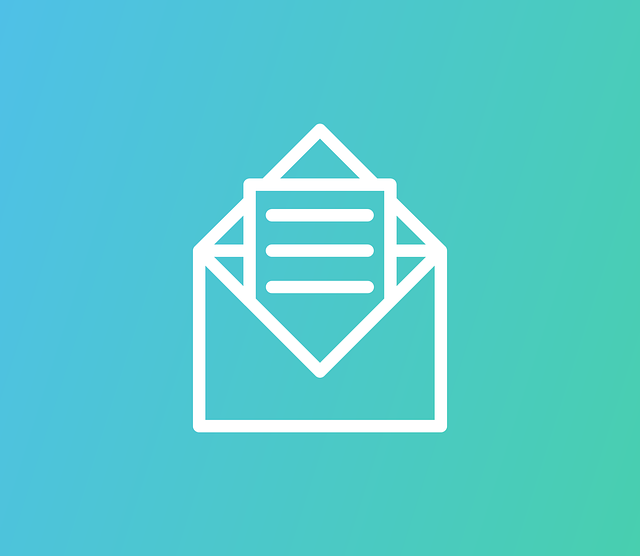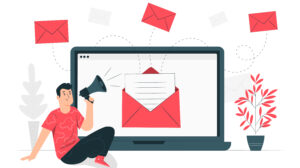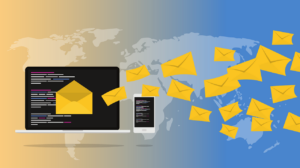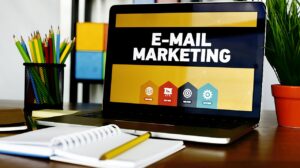Conveying a message successfully depends on three factors.
1) Correct message
2) Correct audience
3) Correct timing
A mix-up in one of these aspects results in missed opportunity or a bad user experience. Thankfully, in the case of email marketing, you have multiple tools to ensure that you don’t go wrong on either. While the sending time, once determined, would rarely deviate much, sending the correct message to the correct audience is a constantly evolving factor. While every email marketer knows personalized emails deliver 6X higher transaction rates, 45% of email marketers still stick to segmenting their list based on based demographic factors only.
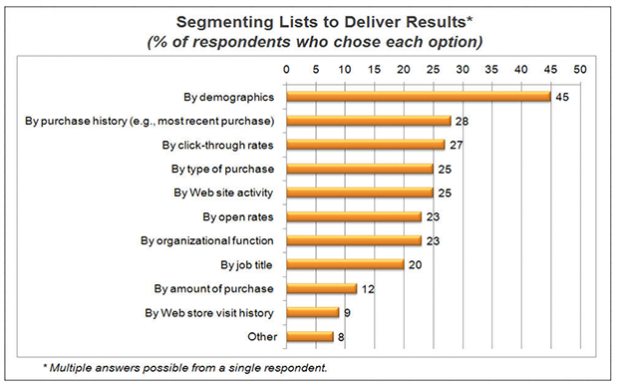
This is why your email segmentation strategy needs to be extra strong to make your emails more effective.
What is your list segmentation strategy?
Do you belong to 45% of email marketers who just segment on the basis of demographics such as Gender, Location, Age, etc.? If ‘no’, Congratulations! you have formulated some type of list segmentation strategy. The list segmentation strategy involves collecting information about your customer in a better way and using it to create a better personalized interaction with your customer.
Some of the best sources of segmentation data are:
- Ask the customers: Provided that you only ask for the name and email address of your prospects when they subscribe, you can build a better customer profile by asking them to fill out information in the welcome email itself. When you show them the upside of providing information, they tend to be more receptive in providing relevant information. Salesforce states that if they get personalized offers or discounts, 63% of millennials, 58% of Gen Xers, and 46% of baby boomers are willing to share personalization information with companies.
- Conduct a survey: Similar to asking your subscriber, you can also conduct a survey or quiz on your website wherein you ask questions that pinpoint the interest of the visitor. This way you get explicit access to their individual tastes, preferences, and beliefs. Add an incentive to the survey to attract increased engagement.
- Page level targeting: By implementing cookie-tracking and tools such as Google Analytics and Hotjar to trace a customer’s path through your website, you can identify specific pages and add opt-ins to target visitors with common interests.
- Lead Magnets: Offer something like digital assets or free downloadable resources and watch people being drawn to it (hence the name lead magnet). When you offer something that is a glimpse or a trial of your products or services, you give the opportunity to your leads to dip their toes before they commit to anything. This is a sign that those who download the lead magnet are expressing interest to know more about the products associated with the lead magnet.
Some common lead magnets are:
-
- eBooks
- A printable checklist
- White papers or case studies
- Free trials or samples
- A free quote or consultation
- Quizzes or a self-assessment
- A discount coupon
Assuming that you have collected data about your prospects and customers, it is now time to create a customer persona based on common interests and segment your emailing list as per the created persona.
The concept behind creating a customer persona is to put yourself in the customer’s shoes and understand what they expect from your business. This way based on the collected data about habits, behaviors, and interests, you can market them better.
Let’s look at different email segmentation strategies.
Different segmentation strategies
1. Customer Journey: One of the most obvious yet overlooked aspects in segmentation is the customer journey. As your visitor progresses through the various stages of your buyer’s journey, their preferences and choices are going to change and so should the segmentation criteria. This segmentation is greatly helpful in setting up automation workflows.
In the email example below by Craftsman, the first email is the welcome email that is sent to the new subscriber whereas the second email is suited for when the subscriber is in the lead nurturing stage.
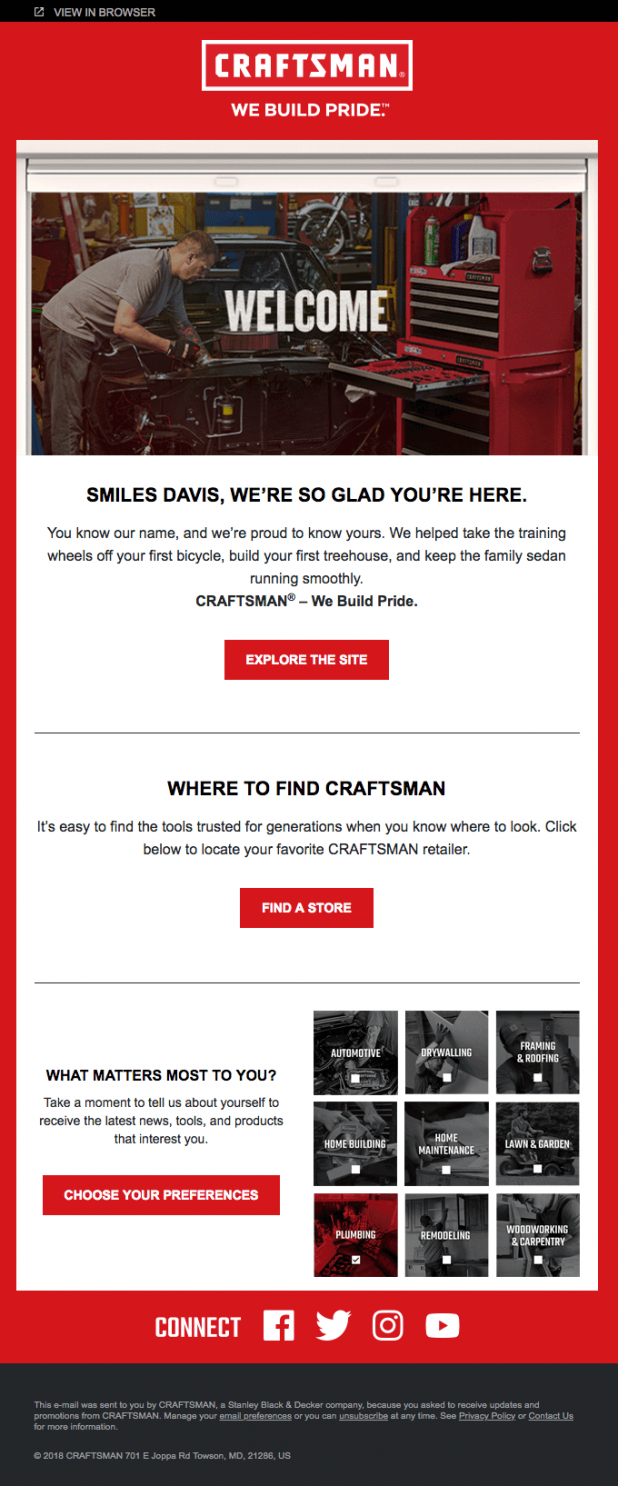
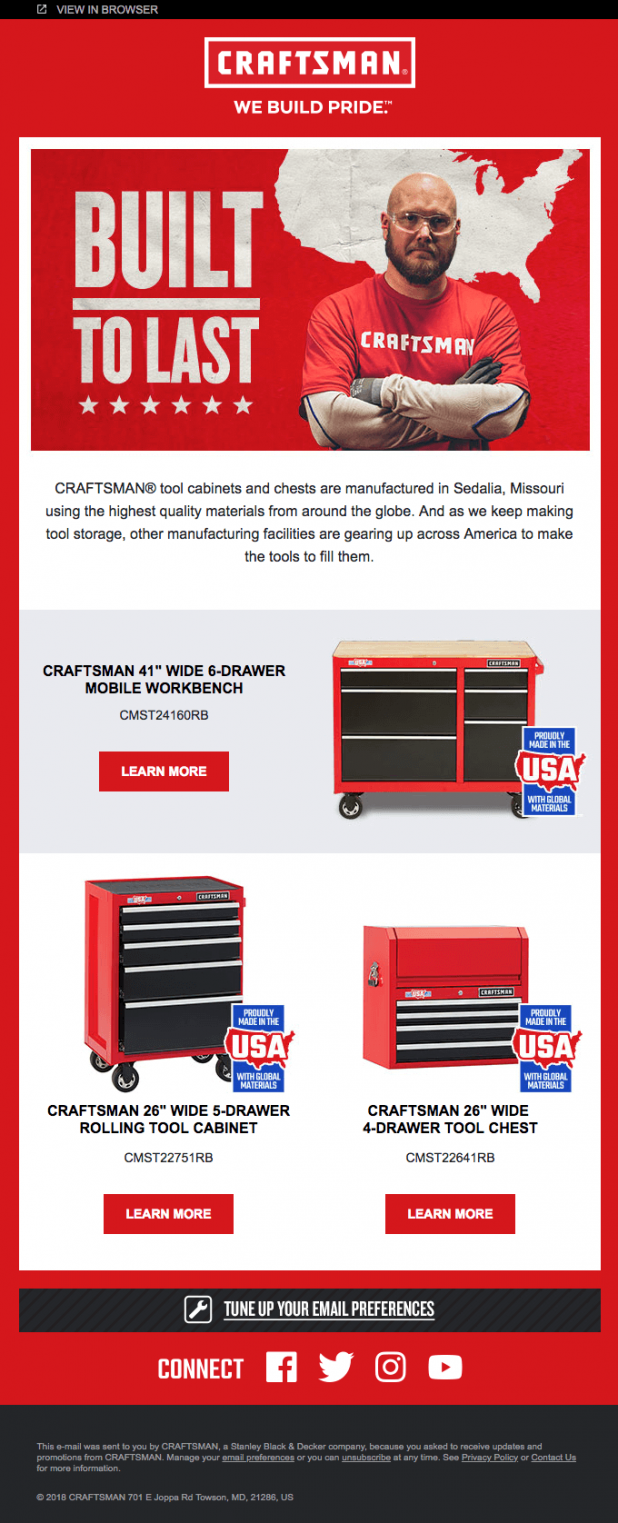
2. Sub-interests: This may not be applicable for most businesses, but if your brand is into selling musical instruments, then subscribers interested in percussion instruments should not be sent discounts for stringed instruments. So, when you have multiple categories in your products and services, segmenting based on the sub-category is important.
In the email example below by Nintendo, the different promotional emails are sent based on the sub-interest of the customer.
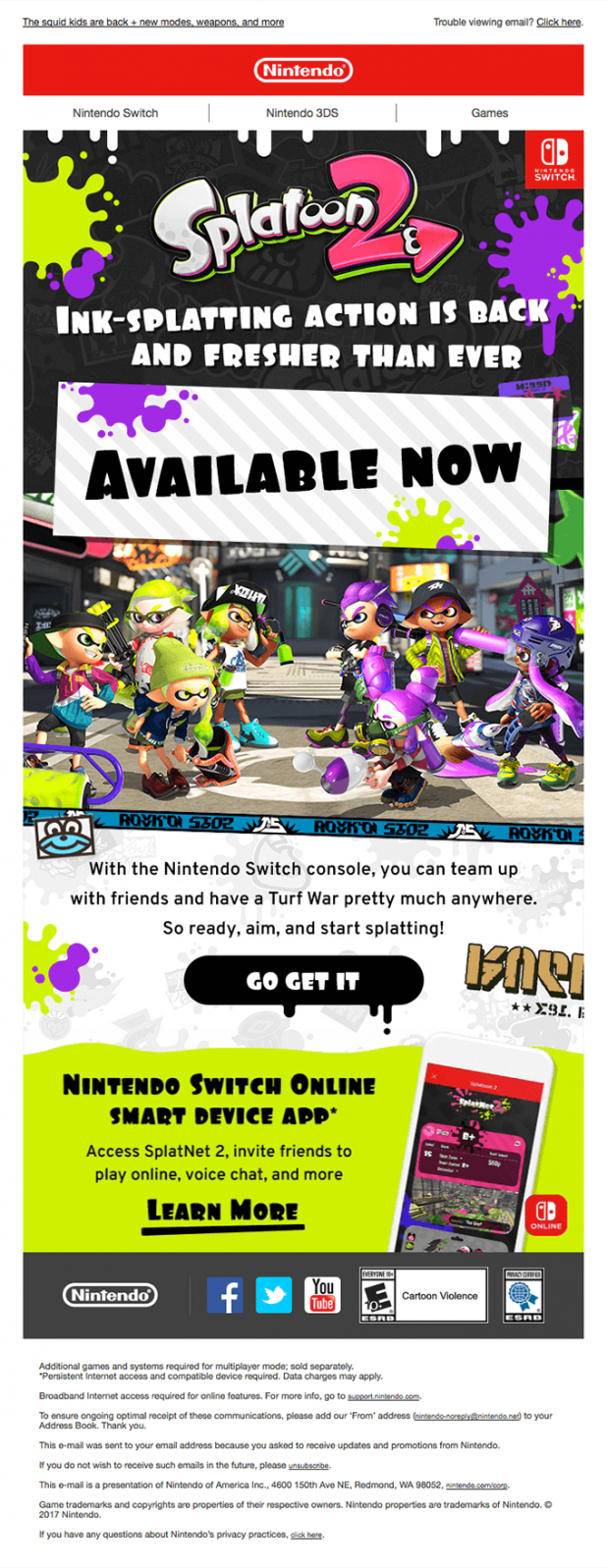

3. Engagement rate: Every email is a segmentation criteria waiting to be found out. By sending promotions to a subscriber, who has not opened the past 5 emails, you may be flogging a dying horse. Instead, by placing them in separate segmentation criteria, you can put in efforts to revive them and make them a part of your engaged emailing list.
In the email example below by Lyft, based on the usage of their service, the customer receives a compilation of yearly statistics which is possible when the engagement is considered as a segmentation criterion.

4. Cart abandonment: Not restricted to the ecommerce sector, cart abandonment is a great segmentation category since it has two purposes. 1) They are sent a cart abandonment email series to identify the cause of abandonment and 2) The abuse of system for getting discounts by intentionally abandoning the cart can reduce drastically.
In the email below by Bonobos, the abandoner is immediately attempted to be lured back and the customer may be marked as an ‘abandoner’.
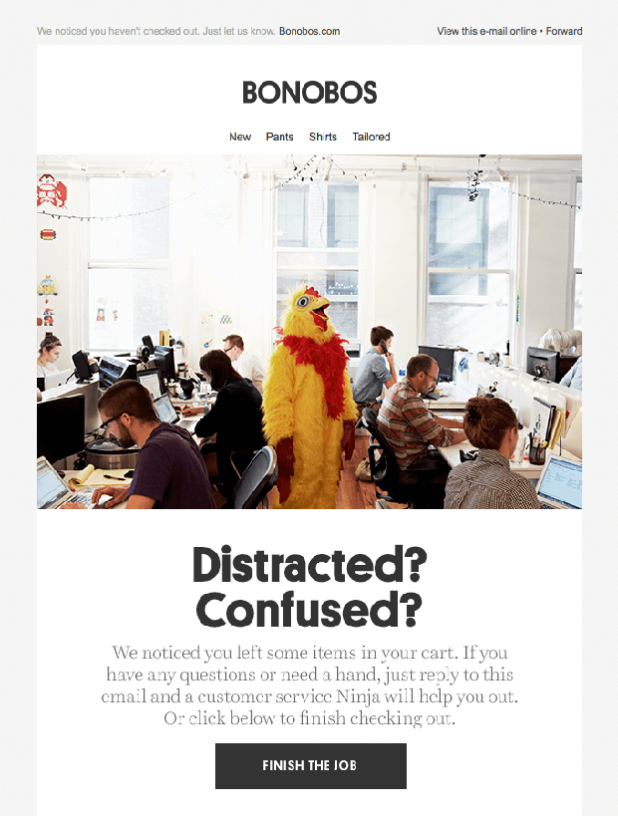
5. Past Purchase History: Depending on your industry, you may have multiple customers who may have purchased the same products for a specific category. Segmenting them based on the products they purchase is another segmentation strategy. Let’s say, someone who bought a shirt can be sent an email upselling a better range of shirts or cross-selling pants or ties to go with the shirt.
In the email below by Dollar shave club, it is suggested the customer add other products to their subscription box.
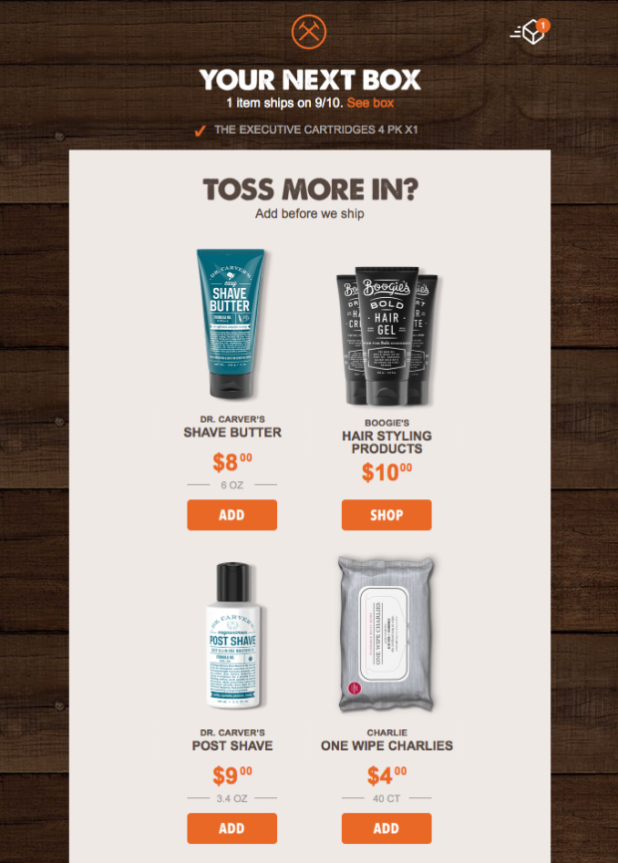
6. Company or Designation: This is applicable for B2B companies wherein you may have multiple subscribers from a single company and segmenting on the basis of the designation or company name helps you craft special offers for a specific audience.
7. Customer Lifetime Value: Let’s say there are two customers A and B who purchased $1200 worth of products from your business in past six months. Customer A spent $200 per month whereas customer B spent on a demand basis. Reflecting on the purchases, the customer lifetime value for Customer A is more than that of B and such customers have better chances of bringing business and you should segment your customers based on their CLV to improve conversions.
8. Device used to open emails: While this is tricky to implement even though most email service providers provide a report of devices your subscribers use, segmenting based on devices used can help you create custom emails for each type of email clients.
In the email below by Penguin Random House, there is an interactivity that may not be played out on all devices. By segmenting your list based on the supported devices, you can create good user experience for some, without ruining it for others.

Wrapping Up
While some of the above stated segmentation strategies involve using special tools to implement, overall segmentation strategy can be implemented with some deep diving into your past emails and understanding what worked in them. All you need is a bit of creativity and you can start targeting your audience with these easy segmentation strategies today.


